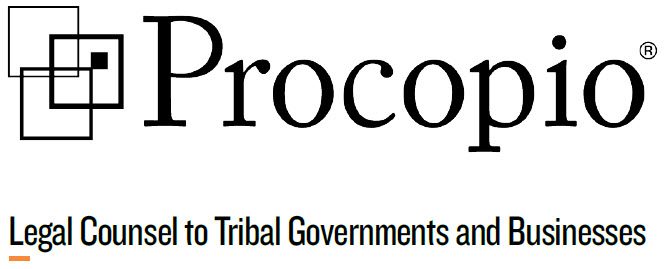By: Stephanie Conduff | Law Clerk | stephanie.conduff@procopio.com
Theodore J. Griswold | Partner | ted.griswold@procopio.com
I am a certified peacemaker.
How so? How many of our readers know what that means? Raise your hands? Okay, that’s what I thought…
At this point, you may imagine me calming the nerves of family members or even that of co-workers at the water cooler. Maybe you envision a circle and a talking piece. You see — circles— even blogging circles — are trendy. Even this season’s Orange is the New Black featured one.
Tribal Governments can use a Peacemaking Court as a forum for resolving conflicts using traditions, customs and culture as the basis for finding peace in the resolution. For some, it can be codified in law and even be a division of the District Court.
Peacemaking is a process that requires the parties to agree to peacemaking and to the selection of the peacemakers in order to participate in the peacemaking process and resolve their differences.
The core values of the Peacemaking court are respect, humility, compassion, spirituality and honesty. No value carries more significance than any other. Participation in the Peacemaking Circle process indicates acceptance of these values both in word and action and a commitment to move forward from the point of dispute.
What is ironic about being a certified peacemaker is that it isn’t about an individual, and it surely isn’t about creating peace. It is about a unified community and about the intent of the circle. It is about restoring balance and about healing. In one tribal Peacemaking court, for those who are litigants and request peacemaking, the goal of the peacemaker is to strive to be:
- Mediators of their differences;
- Leaders in teaching them our history, customs and culture;
- Healers of conflict by promoting peace and harmony;
- Guides to teach them and help them find their tribal identity.
My debut into peacemaking is a result of years serving as a judicial clerk for the Honorable Chief Justice Barbara Smith who sits on the Supreme Court for the Chickasaw Nation. She has been a facilitator for the Native American Rights Fund (NARF) Chautauqua Peacemaking Project and is on the Advisory Committee for their current Peacemaking Project. She is also on the NARF Board of Directors. Though she is too humble to agree, I consider her the intellectual leader of peacemaking. She is entrusted by the elders of many tribal nations with the wisdom and traditions used in their peacemaking over the centuries.
She and her brother, the Honorable Michael Smith, a District Court Judge for the Sac and Fox Nation, have mentored me for years. They co-teach at the University of Oklahoma and took 15 of us through a journey of self-discovery to prepare to become peacemakers. They are the ones that brought me to Medicine Bluffs.
Peacemaking requires patience. You have to let go of being in charge of communication in the circle — something that is difficult for attorneys and law students to do. If you represent a client who chooses the peacemaking circle route, then you will not even be allowed in the circle. There is no need for representation in the circle.
Peacemaking takes time. Really, it is all about time. In a circle you start to realize that everyone is equal. No titles and accolades exist within the circle. I am just a voice. Not THE VOICE in the circle. Who am I as a person, then, I wonder? For years now, every time I introduce myself or someone introduces me it is based on what I do. What am I supposed to say to this group of people looking at me if I can’t tell them what I do or what I’ve done?
The circle can introduce new doubts that you didn’t even know that you have inside of you — then give you the time and perspective to work through to the natural resolution.
For many litigants who opt-in to the circle they initially think it will be easier. Some perceive it will be less punishment. However, the circle oftentimes commands courage, requires responsibility and provokes shame in a way so intimate a Judge could never convey it down from the bench. When the litigant must be in community with and listen to the victim or the victims’ family there is a sense of obligation that often emerges. As it pertains to a justice system, Chief Justice Smith said something powerful that stays with me: It is better for my soul to do good things instead of mean things.
For example, punishing tribal youth for poor decisions, which will affect their college admission chances or potential job opportunities, does nothing for the person or the Native community. Instead, healing is a good thing for those involved in the circle and in the tribal community. After all, a tribe is a family of families. By making them aware of their actions and the affect it has on others can often prompt change and self-evaluation that can promote responsibility and maturity. Participation in the circle is voluntary.
Peacemaking courts are analogous to other restorative justice courts we see in mainstream judicial systems. Examples of these are DUI courts, drug courts, Veteran’s courts, Sex Trafficking Courts and Homelessness Courts. I think the success we have seen in the Homelessness Court, that started in San Diego in 1989, show us that doing something innovative can make a difference in citizens’ lives. An except from a presentation on the ABA Commission on Homelessness and Poverty highlights the importance of this program in the San Diego Community:
“Homeless Court helps the community by engaging homeless people in gainful activity, thereby removing them from the doorways, parks and gathering places where they are unwanted and susceptible to arrest. It helps homeless defendants move back into productive lives because the sentence is most often participation in a work and counseling program that offers help with overcoming social problems, enhancing job seeking skills and locating employment opportunities and affordable housing. In the words of Charles Campbell, past Presiding Judge of the Ventura Superior Court, “Other than providing temporary housing, incarceration of the homeless does nothing to benefit the homeless or the community.” Referrals to specialized alcohol and drug treatment programs, mental health services and training or searching for employment help the community to tackle the problem of homelessness in a meaningful and practical way.”
Ultimately, it is up to each sovereign to decide how to operate their court systems and systems of justice. I am confident that we can find ways to intentionally include multigenerational dialogue of our youth and our elders when addressing community issues in achieving balance. Peacemaking is a natural path to that end.
To learn more, join the National American Indian Court Judges Association, Columbia Law School, and the Native American Rights Fund at the Traditional Peacemaking: Exploring the Intersections between Tribal Courts and Peacemaking, Including Alternatives to Detention at the Hard Rock Hotel and Casino – Tulsa on October 6-7. Topics they will cover include:
- Peacemaking Doesn’t Operate in a Vacuum: The Importance of Context
- Approaching Culturally Appropriate Justice with Indigent Defendants
- Peacemaking from the Ground Up
- Peacemaking from the Bench
- Preparing the Next Generation of Peacemakers: Academic and Court Training Options
- Reentry Programs Using Peacemaking/Peacemaking in Correctional Facilities
To register for the event, click here.
Stephanie Conduff is a citizen of the Cherokee Nation. She graduated from the University of Oklahoma College of Law. Stephanie is especially thankful for her mentors, the Honorable Barbara Smith and the Honorable Michael Smith, who have significantly invested in her and her understanding of the inner-connection between cultural relativity and progress in Indian Country.
Ted is head of the Native American Law practice group and primary editor for the Blogging Circle. Connect with Ted at ted.griswold@procopio.com and 619.515.3277.

 Ted is head of the Native American Law practice group and primary editor for the Blogging Circle. Connect with Ted at ted.griswold@procopio.com and 619.515.3277.
Ted is head of the Native American Law practice group and primary editor for the Blogging Circle. Connect with Ted at ted.griswold@procopio.com and 619.515.3277.
 Ted is head of the Native American Law practice group and primary editor for the Blogging Circle. Connect with him at ted.griswold@procopio.com and 619.515.3277.
Ted is head of the Native American Law practice group and primary editor for the Blogging Circle. Connect with him at ted.griswold@procopio.com and 619.515.3277.